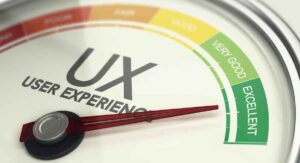Creating a compelling UX designer resume is critical for professionals in user experience design. Whether you’re a seasoned designer or just starting out, your resume serves as your personal showcase, highlighting your skills, experience, and unique approach to UX design. In this blog, we’ll guide you through crafting a resume that stands out and effectively communicates your value to potential employers. We’ll also share a UI/UX design bootcamp that helps professionals gain the required skills for a UX design career.
Importance of a Solid UX Designer Resume
A solid UX designer resume does more than list your past job experiences and skills—it tells a compelling story of your professional journey. For UX designers whose work revolves around creating satisfying user experiences, the resume must reflect a deep understanding of user needs and design aesthetics. It’s your first interaction with a potential employer, and just like any product you design, your resume must effectively address the user’s (employer’s) needs. This document is often employers’ first impression of you, so it needs to be polished, professional, and reflective of your capabilities.
Also Read: How to Design a User-Friendly Interface?
UX Designer Resume Template
When structuring your UX designer resume, it’s crucial to present information in a clear and logical order. Here’s a simple guide to help you structure your resume effectively:
Header
Start with a header with your name, professional title (UX Designer), and contact information such as phone number, email, and LinkedIn profile. If you have a professional website or portfolio, include that as well.
Professional Summary or Objective
This section should concisely summarize your UX design expertise, major achievements, and the unique value you can bring to a potential employer. Tailor this section to mirror the needs and language of the job you’re applying for.
Skills
Highlight technical and soft skills relevant to UX design. Include proficiencies in design software (like Adobe XD, Sketch, Figma), understanding of UX principles, project management tools (such as Jira or Trello), and any coding skills, if applicable. Soft skills like communication, teamwork, and problem-solving should also be listed.
Professional Experience
List your work experience in reverse chronological order. For each job, include your title, the company’s name, location, and the dates you were employed. Under each role, add bullet points that describe your responsibilities and achievements. Use action words and quantify your results to demonstrate your impact.
Education
Include your educational background, focusing on relevant degrees or certifications. If you have attended workshops or seminars that add value to your UX career, mention those.
Additional Sections
Depending on your experience and the job you’re applying for, you may want to include additional sections related to UX design, such as publications, conferences, workshops, or personal projects.
Also Read: A Guide to Improving and Measuring User Experience
Tips for Writing Your UX Designer Resume
Here are some targeted tips to help you make your UX design resume as effective as possible:
- Tailor Your Resume: Make sure your resume speaks directly to the job description. Highlight skills and experiences that align closely with what the job requires.
- Use a Clean Layout: Since design is at the heart of your work, ensure your resume has a clean, professional layout. Use headings, bullet points, and adequate spacing to improve readability.
- Focus on Achievements: Instead of just listing tasks, focus on what you accomplished in those tasks. Use metrics where possible, e.g., “Improved user session time by 15% through intuitive layout redesigns.”
- Include a Portfolio Link: Your portfolio is where you can show rather than tell. Make sure to include a link to your portfolio on your resume.
- Optimize for Keywords: Use keywords like “UX designer skills” and “UX design tools” throughout your resume to optimize it for applicant tracking systems (ATS).
- Proofread: Grammatical errors or typos can hurt your credibility as a UX designer. Proofread your resume multiple times or have a friend review it.
Wrapping Up
Your UX designer resume is a key tool in your job search arsenal. It needs to be clear and concise and, above all, demonstrate the effectiveness of your UX design skills through well-chosen words and layout. By following this guide and utilizing the provided tips, you can craft a resume that passes through ATS filters and gets noticed by hiring managers. Remember, a well-designed resume reflects your professionalism and attention to detail—qualities every UX designer must have.
Also Read: UI/UX Designer Salary: What Can You Expect in 2024?
Get the Skills You Need for a Successful UX Design Career
Today, end users have little patience for a poor user experience. That’s why qualified UX designers are in high demand in every industry. Consider enrolling in a comprehensive online UI/UX design program to gain the latest skills in this field. This bootcamp provides an immersive and practical learning experience through live online classes, hands-on projects, masterclasses led by industry experts, training on the top tools, and more. Completing a program like this will only enhance your UX designer resume!
You might also like to read:
How to Become a UI UX Designer: A Comprehensive Guide
UI UX Designer Career Path: A Comprehensive Guide
All About UI UX Design Principles
Accessibility in UX Design: A Definitive Guide
Career Prep: Linux Interview Questions for UI/UX Design Professionals






